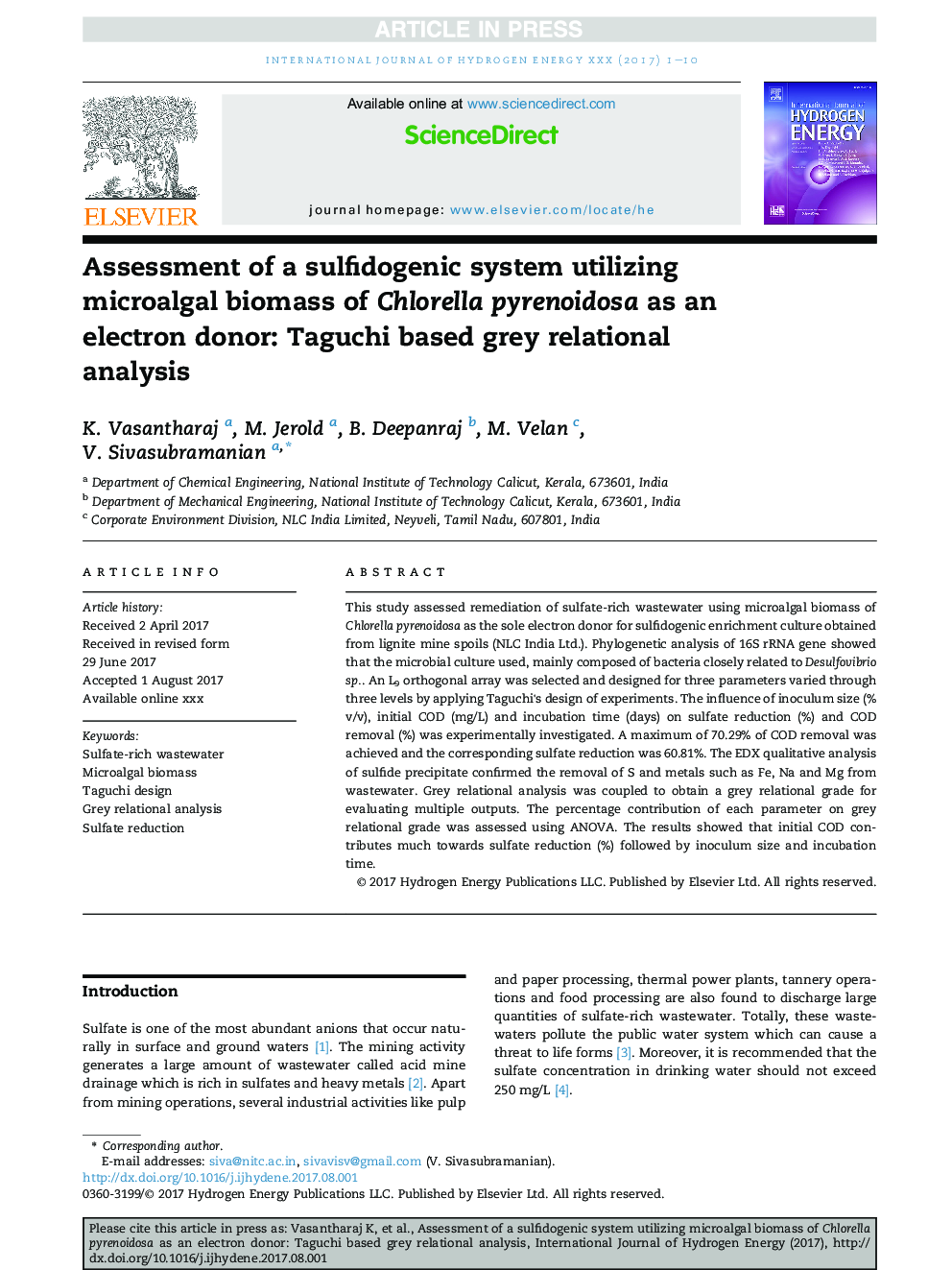| Article ID | Journal | Published Year | Pages | File Type |
|---|---|---|---|---|
| 5145088 | International Journal of Hydrogen Energy | 2017 | 10 Pages |
Abstract
This study assessed remediation of sulfate-rich wastewater using microalgal biomass of Chlorella pyrenoidosa as the sole electron donor for sulfidogenic enrichment culture obtained from lignite mine spoils (NLC India Ltd.). Phylogenetic analysis of 16S rRNA gene showed that the microbial culture used, mainly composed of bacteria closely related to Desulfovibrio sp.. An L9 orthogonal array was selected and designed for three parameters varied through three levels by applying Taguchi's design of experiments. The influence of inoculum size (% v/v), initial COD (mg/L) and incubation time (days) on sulfate reduction (%) and COD removal (%) was experimentally investigated. A maximum of 70.29% of COD removal was achieved and the corresponding sulfate reduction was 60.81%. The EDX qualitative analysis of sulfide precipitate confirmed the removal of S and metals such as Fe, Na and Mg from wastewater. Grey relational analysis was coupled to obtain a grey relational grade for evaluating multiple outputs. The percentage contribution of each parameter on grey relational grade was assessed using ANOVA. The results showed that initial COD contributes much towards sulfate reduction (%) followed by inoculum size and incubation time.
Related Topics
Physical Sciences and Engineering
Chemistry
Electrochemistry
Authors
K. Vasantharaj, M. Jerold, B. Deepanraj, M. Velan, V. Sivasubramanian,
